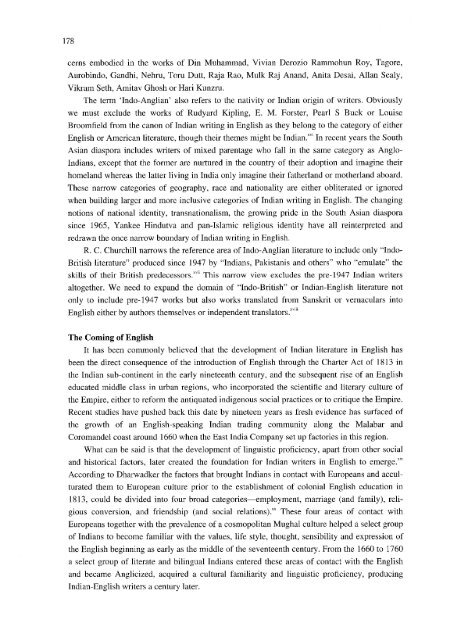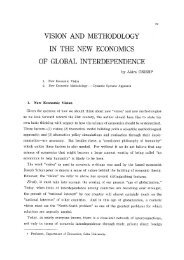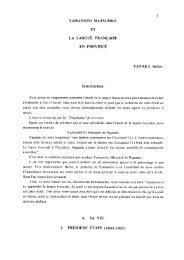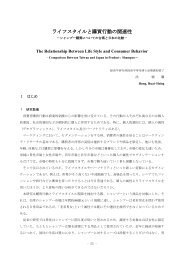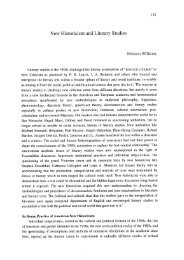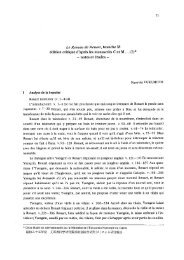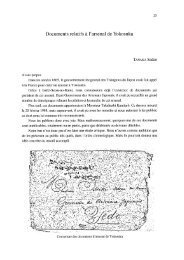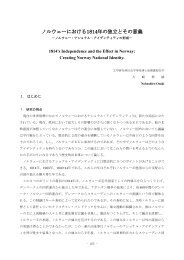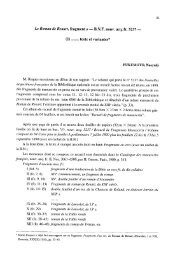Indian Writing in English 1794-2004 - Soka University Repository
Indian Writing in English 1794-2004 - Soka University Repository
Indian Writing in English 1794-2004 - Soka University Repository
Create successful ePaper yourself
Turn your PDF publications into a flip-book with our unique Google optimized e-Paper software.
178<br />
cerns embodied <strong>in</strong> the works of D<strong>in</strong> Muhammad, Vivian Derozio Rammohun Roy, Tagore,<br />
Aurob<strong>in</strong>do, Gandhi, Nehru, Toru Dutt, Raja Rao, Mulk Raj Anand, Anita Desai, Allan Sealy,<br />
Vikram Seth, Amitav Ghosh or Hari Kunzru.<br />
The term Indo-Anglian' also refers to the nativity or <strong>Indian</strong> orig<strong>in</strong> of writers. Obviously<br />
we must exclude the works of Rudyard Kipl<strong>in</strong>g, E. M. Forster, Pearl S Buck or Louise<br />
Broomfield from the canon of <strong>Indian</strong> writ<strong>in</strong>g <strong>in</strong> <strong>English</strong> as they belong to the category of either<br />
<strong>English</strong> or American literature, though their themes might be <strong>Indian</strong>."' In recent years the South<br />
Asian diaspora <strong>in</strong>cludes writers of mixed parentage who fall <strong>in</strong> the same category as Anglo-<br />
<strong>Indian</strong>s, except that the former are nurtured <strong>in</strong> the country of their adoption and imag<strong>in</strong>e their<br />
homeland whereas the latter liv<strong>in</strong>g <strong>in</strong> India only imag<strong>in</strong>e their fatherland or motherland aboard.<br />
These narrow categories of geography, race and nationality are either obliterated or ignored<br />
when build<strong>in</strong>g larger and more <strong>in</strong>clusive categories of <strong>Indian</strong> writ<strong>in</strong>g <strong>in</strong> <strong>English</strong>. The chang<strong>in</strong>g<br />
notions of national identity, transnationalism, the grow<strong>in</strong>g pride <strong>in</strong> the South Asian diaspora<br />
s<strong>in</strong>ce 1965, Yankee H<strong>in</strong>dutva and pan-Islamic religious identity have all re<strong>in</strong>terpreted and<br />
redrawn the once narrow boundary of <strong>Indian</strong> writ<strong>in</strong>g <strong>in</strong> <strong>English</strong>.<br />
R. C. Churchill narrows the reference area of Indo-Anglian literature to <strong>in</strong>clude only "Indo-<br />
British literature" produced s<strong>in</strong>ce 1947 by "<strong>Indian</strong>s, Pakistanis and others" who "emulate" the<br />
skills of their British predecessors."' This narrow view excludes the pre-1947 <strong>Indian</strong> writers<br />
altogether. We need to expand the doma<strong>in</strong> of "Indo-British" or <strong>Indian</strong>-<strong>English</strong> literature not<br />
only to <strong>in</strong>clude pre-1947 works but also works translated from Sanskrit or vernaculars <strong>in</strong>to<br />
<strong>English</strong> either by authors themselves or <strong>in</strong>dependent translators."'"<br />
The Com<strong>in</strong>g of <strong>English</strong><br />
It has been commonly believed that the development of <strong>Indian</strong> literature <strong>in</strong> <strong>English</strong> has<br />
been the direct consequence of the <strong>in</strong>troduction of <strong>English</strong> through the Charter Act of 1813 <strong>in</strong><br />
the <strong>Indian</strong> sub-cont<strong>in</strong>ent <strong>in</strong> the early n<strong>in</strong>eteenth century, and the subsequent rise of an <strong>English</strong><br />
educated middle class <strong>in</strong> urban regions, who <strong>in</strong>corporated the scientific and literary culture of<br />
the Empire, either to reform the antiquated <strong>in</strong>digenous social practices or to critique the Empire.<br />
Recent studies have pushed back this date by n<strong>in</strong>eteen years as fresh evidence has surfaced of<br />
the growth of an <strong>English</strong>-speak<strong>in</strong>g <strong>Indian</strong> trad<strong>in</strong>g community along the Malabar and<br />
Coromandel coast around 1660 when the East India Company set up factories <strong>in</strong> this region.<br />
What can be said is that the development of l<strong>in</strong>guistic proficiency, apart from other social<br />
and historical factors, later created the foundation for <strong>Indian</strong> writers <strong>in</strong> <strong>English</strong> to emerge.—<br />
Accord<strong>in</strong>g to Dharwadker the factors that brought <strong>Indian</strong>s <strong>in</strong> contact with Europeans and accul-<br />
turated them to European culture prior to the establishment of colonial <strong>English</strong> education <strong>in</strong><br />
1813, could be divided <strong>in</strong>to four broad categories—employment, marriage (and family), reli-<br />
gious conversion, and friendship (and social relations).- These four areas of contact with<br />
Europeans together with the prevalence of a cosmopolitan Mughal culture helped a select group<br />
of <strong>Indian</strong>s to become familiar with the values, life style, thought, sensibility and expression of<br />
the <strong>English</strong> beg<strong>in</strong>n<strong>in</strong>g as early as the middle of the seventeenth century. From the 1660 to 1760<br />
a select group of literate and bil<strong>in</strong>gual <strong>Indian</strong>s entered these areas of contact with the <strong>English</strong><br />
and became Anglicized, acquired a cultural familiarity and l<strong>in</strong>guistic proficiency, produc<strong>in</strong>g<br />
<strong>Indian</strong>-<strong>English</strong> writers a century later.


